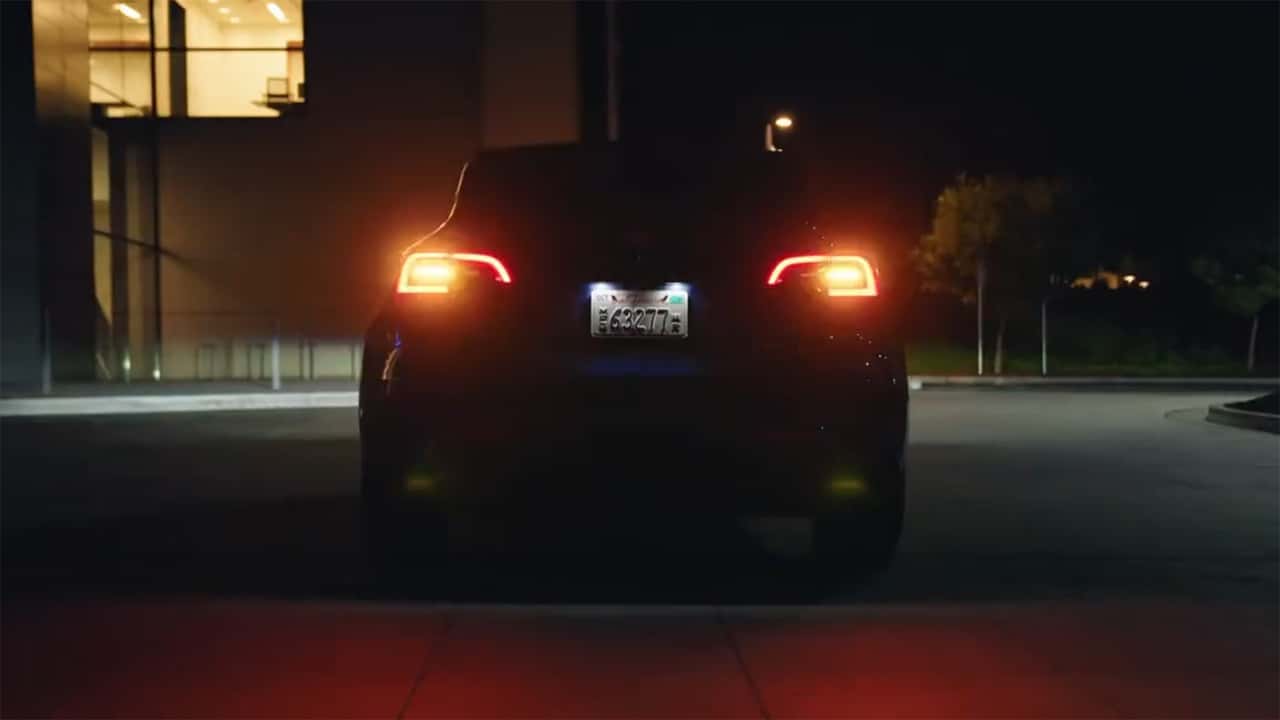Tesla has introduced a new safety feature for its lineup of passenger cars in the US that aims to enhance visibility after a crash. The update, which is delivered over-the-air (OTA), activates hazard lights and makes them flash faster after an airbag is deployed. This feature is available for all US-bound Model 3 and Model Y vehicles, as well as Model S and Model X cars manufactured after 2020. The intensified flashing of the hazard lights helps make the damaged vehicle more visible, particularly at night. Tesla announced the update on its Tesla North America X Twitter account, accompanied by a video demonstrating the feature in action.
It is worth noting that other automakers, such as Volvo, BMW, and Volkswagen, have already incorporated this safety feature into their vehicles as early as the 2000s. Tesla’s OTA software updates have become a notable aspect of its vehicles, with previous updates including windscreen wiper controls that allow the driver to adjust wiper speed directly from the steering wheel.
Tesla has been known for its extensive use of OTA updates to address recalls issued by the National Highway Traffic Safety Administration (NHTSA). In fact, a report from last year revealed that Tesla has utilized OTA updates for seven out of 19 recalls issued between 2020 and 2022. This approach has prompted CEO Elon Musk to criticize the NHTSA’s terminology as outdated and inaccurate in relation to recalls. Last year, Tesla issued a software fix for approximately 1.1 million vehicles across all its models due to a potential issue with the side window automatic reversal system.
Overall, Tesla’s commitment to OTA updates continues to provide its customers with new features and improvements, ensuring that their vehicles remain up-to-date and equipped with the latest safety enhancements.
Tesla’s Latest Safety Enhancement Automatically Triggers Hazard Lights Following a Collision
In the ever-evolving world of automotive technology, Tesla has always been at the forefront of innovation. The pioneering electric vehicle manufacturer has consistently introduced groundbreaking features that prioritize safety and redefine driving experiences. The latest addition to Tesla’s arsenal of safety enhancements is the automatic activation of hazard lights following a collision.
Tesla’s commitment to road safety is unwavering. With this new feature, the company aims to provide an additional layer of protection to its drivers and passengers, as well as alert other road users of potential dangers. By automatically activating the hazard lights after a collision, Tesla vehicles become more visible to nearby drivers, allowing them to react promptly and appropriately to the situation.
The automatic activation of hazard lights serves as a crucial signal to other road users that an accident has occurred. This prompt notification helps in preventing secondary accidents and guiding emergency responders to the scene, thereby potentially saving lives. While hazard lights are traditionally manually operated by drivers after a collision, Tesla has taken the responsibility of automating this process to ensure faster and more efficient response times.
The hazard light activation feature is a testament to Tesla’s advanced sensor technology and intelligent software capabilities. Equipped with an array of sensors strategically placed around the vehicle, Tesla cars possess a remarkable ability to assess collision severity accurately. This capability is instrumental in deciding whether to trigger the hazard light activation automatically.
Tesla’s sensors can detect the severity of an impact and determine whether it warrants the automatic activation of hazard lights. Factors such as speed, force, and direction of impact are analyzed, ensuring that the feature is only triggered in situations where it is truly necessary. This intelligent decision-making process effectively eliminates false positives, ensuring that the hazard lights are not inadvertently activated in non-collision scenarios.
Apart from improving safety, Tesla’s automatic hazard light activation also streamlines post-accident procedures. By automatically activating hazard lights, the driver is relieved of the additional task of manually activating them while dealing with the aftermath of a collision. This feature allows drivers to focus on more critical matters, such as assessing injuries and contacting emergency services.
As with any new feature, Tesla has rigorously tested the automatic hazard light activation in various real-world scenarios. The company has ensured that the feature works seamlessly with different types of collisions, ensuring reliability and accuracy. Tesla’s commitment to safety extends beyond just theoretical concepts; it involves comprehensive research and development to ensure that the feature enhances driver safety under all circumstances.
Tesla’s dedication to improving vehicle safety has garnered much acclaim and recognition. The automatic activation of hazard lights following a collision is yet another testament to the company’s relentless pursuit of innovative solutions to the pressing issues faced by modern drivers. This safety enhancement not only protects Tesla drivers and passengers, but it contributes to the overall well-being of the entire automotive community.
In conclusion, Tesla’s automatic activation of hazard lights following a collision represents a significant milestone in vehicle safety. By providing an additional layer of protection and alerting other road users promptly, Tesla has taken a stride towards mitigating the risks associated with accidents. With this pioneering feature, Tesla continues to showcase its commitment to revolutionizing the automotive industry and prioritizing the safety of drivers and passengers alike.

